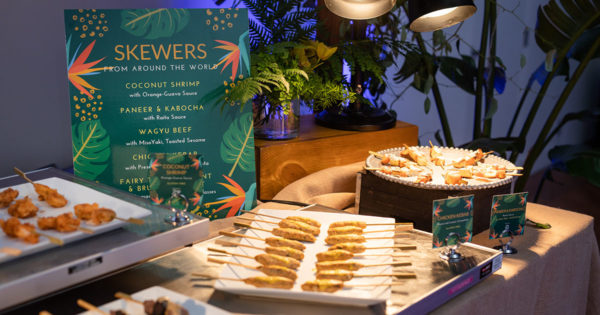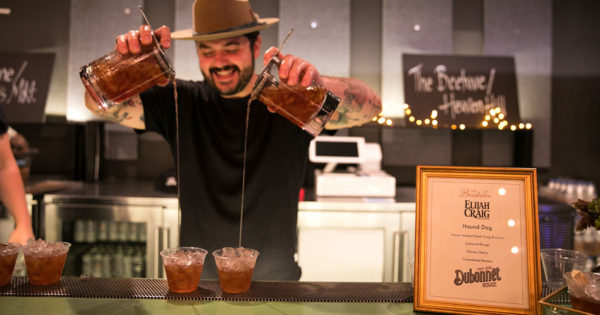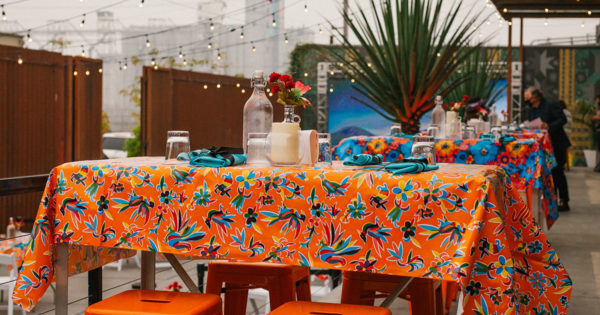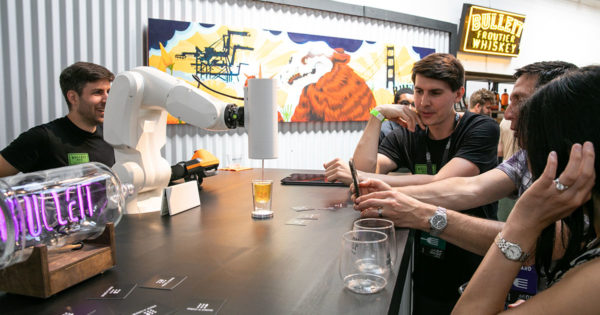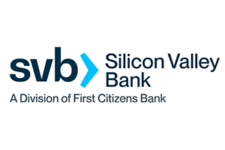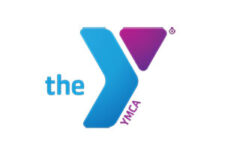Crafting Extraordinary Culinary Experiences: Best Practices for Event Planners
San Francisco, CA | Updated: 01/18/2024
Event planners are always striving to create memorable experiences in a culinary setting to enhance the overall impact of an event and leave a lasting impression on attendees. Collaborative planning between event organizers and culinary providers (such as The Midway’s culinary team) is essential for success. Here are some ways in which event planners can help achieve this goal:
Unique Menu Selection
Event planners prioritize culinary providers that bring creativity and innovation to the table. Unique and creative menu options not only cater to diverse palates but also serve as conversation starters. For instance, a dish that combines traditional ingredients in an unconventional way or presents a local delicacy with a modern twist can pique interest and provoke discussions, enhancing the social fabric of the event.
Culinary Storytelling
Incorporating storytelling into the culinary experience adds depth and context to the meal. It transforms dining from a mere act of eating to an immersive narrative journey. Event planners might highlight the origin of a heritage recipe or the journey of a local farmer, turning each dish into a chapter of a larger story. This approach not only enriches the dining experience but also fosters a deeper connection between the food, its origins, and the attendees.
Interactive Dining
Interactive dining options, such as chef’s tables, live cooking demonstrations, or DIY food stations, transform attendees from passive diners to active participants. These experiences can demystify the cooking process, offer educational insights into culinary techniques, and provide a platform for chefs to showcase their creativity and interact with the guests, making the meal a memorable journey rather than just a destination.
Themed Menus
A menu that aligns with the event’s theme can significantly enhance the overall experience. For instance, a “Tropical Paradise” theme might not only feature Caribbean-inspired dishes and tropical cocktails but also incorporate decor, music, and entertainment that transport attendees to an exotic locale. This holistic approach ensures a unified and immersive experience, making the event memorable and cohesive.
Customized Signature Cocktails
Signature cocktails or mocktails crafted exclusively for the event add a layer of personalization and exclusivity. These beverages can be designed to reflect the event’s theme, color palette, or even the purpose of the event. Offering a unique beverage menu can make the event stand out, providing guests with an exclusive experience they can’t find elsewhere.
Incorporating Local or Seasonal Ingredients
Utilizing local and seasonal ingredients not only supports local agriculture but also ensures freshness and quality. It allows culinary providers to showcase the best of what the region has to offer at a particular time of year. This practice also resonates well with attendees who are increasingly conscious of the carbon footprint of their food choices and prefer eating sustainably.
Food and Beverage Pairings
Carefully curated food and beverage pairings can elevate the dining experience. Whether it’s a classic wine and cheese pairing or something more avant-garde like craft beer and artisanal snacks, these combinations can enhance the flavors and create a sophisticated tasting journey. It’s an opportunity for culinary providers to showcase their knowledge and for attendees to explore new flavors and textures.
Surprise Elements
Introducing surprise elements such as amuse-bouches, palate cleansers, or unexpected dessert reveals can transform a standard meal into an exciting culinary adventure. These elements keep guests intrigued and engaged, eagerly anticipating what’s coming next, and add an element of theatricality to the dining experience.
Interactive Artistic Presentations
When food presentation resembles a work of art or incorporates sensory elements like aromatic smoke, edible flowers, or innovative molecular gastronomy techniques, it turns dining into a multisensory experience. Such presentations not only please the palate but also delight the eyes and engage the senses, leaving a lasting impression on the attendees.
Personalization
Personalizing the dining experience can make guests feel valued and cared for. Whether it’s accommodating special dietary needs, creating customized dishes for VIPs, or even personalizing menu cards, these touches show attentiveness and consideration, enhancing the overall experience of the attendees.
Experiential Dining
Experiential dining concepts, such as dining in the dark, immersive pop-up restaurants, or themed murder mystery dinners, offer guests more than just a meal; they offer a story and an adventure. These unique dining experiences can become the highlight of the event, providing attendees with memorable stories to share long after the event has concluded.
Culinary Competitions
Incorporating culinary competitions or challenges adds an element of excitement and entertainment. It can foster a sense of camaraderie among attendees and create an engaging, interactive atmosphere. Whether it’s a friendly cook-off or a more competitive “Iron Chef” style showdown, these activities can turn the culinary experience into a thrilling spectacle.
Sensory Elements
Engaging multiple senses through the presentation of food and the dining environment can create a multisensory experience. The use of color, texture, aroma, and even sound (like the sizzle of a dish being prepared) can heighten the dining experience, making it more memorable and engaging.
Sustainability and Ethical Sourcing
Emphasizing sustainable and ethical sourcing practices in the culinary experience aligns with the growing consciousness of attendees towards the environment and ethical issues. It not only reflects the values of the event and its organizers but also resonates with attendees who prefer to support and participate in events that are conscious of their impact on the planet and society.
Interactive Food and Wine Pairing Workshop
Offering workshops or sessions where attendees can learn about and participate in food and wine pairings can be both educational and engaging. It’s an opportunity for attendees to deepen their understanding of gastronomy, interact with experts, and perhaps even discover a new favorite wine or dish.
RELATED CONTENT


